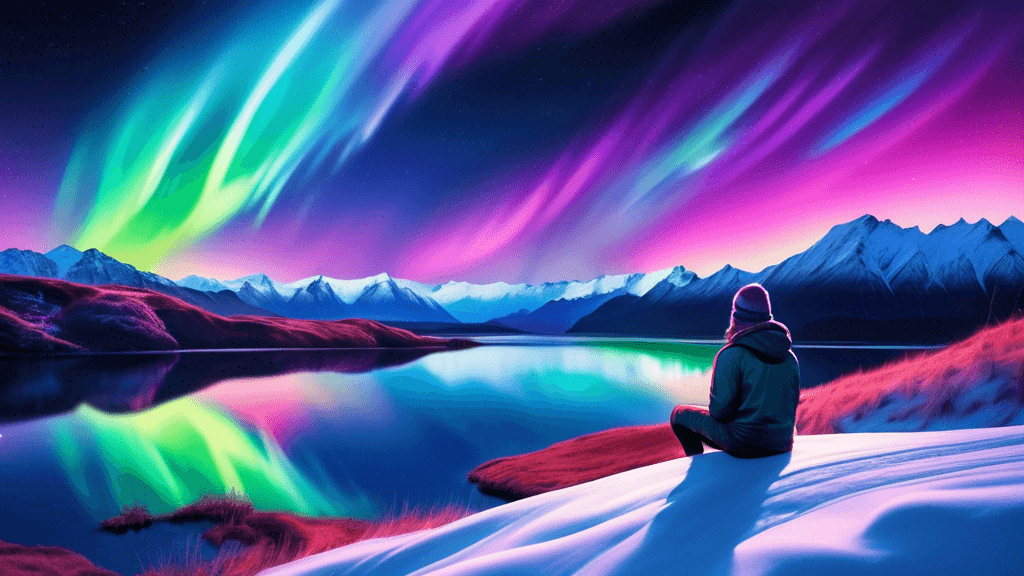
Capturing the Magic: Photographing the Southern Lights in New Zealand
Share
Exploring the Phenomenon of the Southern Lights
Have you ever witnessed the sky dance in vibrant hues of green, purple, and pink? This spectacle, known as the Aurora Australis or Southern Lights, is nature's own celestial ballet, and New Zealand offers one of the most astonishing stages to view this incredible light show. But what makes this phenomenon so special, and how can photographers, nature enthusiasts, and curious travelers capture its beauty?
Understanding the Aurora Australis
The Aurora Australis, like its northern counterpart the Aurora Borealis, occurs when electrically charged particles from the sun strike atoms in Earth’s atmosphere, causing bursts of light. This geomagnetic activity is influenced by solar winds, which are more intense during periods of heightened solar activity. Here are a few insights:
- The colors of the aurora are determined by the type of gas particles involved, with oxygen contributing greens and reds, and nitrogen purples and blues.
- The best season to view the Southern Lights in New Zealand is during the winter months of March to September when nights are darker and longer.
- Geomagnetic storms can intensify the auroras, making them visible even on less active days.
The Ideal Locations for Viewing the Southern Lights in New Zealand
New Zealand's geographical position in the Southern Hemisphere makes it a prime location for viewing the Aurora Australis. The further south you go, the better your chances. Here are some top spots:
- Stewart Island: Positioned closer to the South Pole, this location offers some of the darkest skies, ideal for aurora viewing.
- The Catlins: The coastal stretch provides expansive eastern and southern horizons clear of light pollution.
- Lake Tekapo: Part of a UNESCO Dark Sky Reserve, its exceptionally dark skies make it perfect not only for aurora but also for general stargazing.
Expert Insight
Capturing the aurora is all about patience and persistence, says Dr. Lucy Green, an astrophysicist specializing in solar activity. The Southern Lights can be unpredictable, but under the right conditions, they offer one of the most rewarding sights in the natural world.
Photographic Tips for Capturing the Southern Lights
Photographing the Southern Lights is an art in itself, requiring technical skill and a bit of luck. Here are curated tips to help you capture the aurora's full glory:
- Use a DSLR or mirrorless camera: You'll need a camera that allows manual control over settings.
- Invest in a good tripod: Long exposures are essential for capturing auroras, and a sturdy tripod will keep your camera stable.
- Wide angle, fast lens: A wide-angle lens with a large aperture (f/2.8 or lower) will capture as much sky as possible and allow more light to hit the sensor.
- Use manual focus: Autofocus is often ineffective in dark settings, so manual focus is preferable.
- Experiment with settings: Start with ISO 1600, a f/2.8 aperture, and 15-second exposure. Adjust based on the intensity of the aurora and ambient light.
Getting the Timing Right
According to Marie Tailor, an experienced aurora chaser, The aurora can flare up very suddenly, so it's important to keep an eye on the geomagnetic activity forecasts and be prepared to go at a moment's notice. Websites like the Official Aurora Forecast provide real-time data crucial for photographers.
Conserving the Beauty We Capture
While capturing these incredible images, it's crucial to remember our responsibility towards preserving the very phenomena we cherish. Light pollution not only affects our ability to enjoy celestial events but can also disrupt local wildlife ecosystems. Advocating for responsible tourism and environmental practices in these sensitive areas is essential.
Renowned environmentalist Jane Goodall once remarked, Only if we understand, can we care. Only if we care, we will help. Only if we help, we shall be saved. Photographing the Southern Lights isn't just about taking home a stunning image; it's about embracing and protecting the natural world that allows us that privilege.
Join the Adventure
Whether you're a seasoned photographer, a budding astronomer, or a traveler curious about the world's wonders, the Southern Lights of New Zealand offer an unforgettable experience. This adventure isn't just a journey through the night but a voyage into the deeper, darker, and magical realms of our planet.
If you're ready to witness and capture one of the most awe-inspiring natural phenomena on Earth, start planning your trip to New Zealand, prepare your gear, and keep your eyes on the skies. The Southern Lights await those who seek out the beauty of our incredible cosmos.
Remember, every photograph taken, every moment shared, and every story told contributes to the preservation and appreciation of these natural wonders for future generations. Let's capture the magic responsibly!





